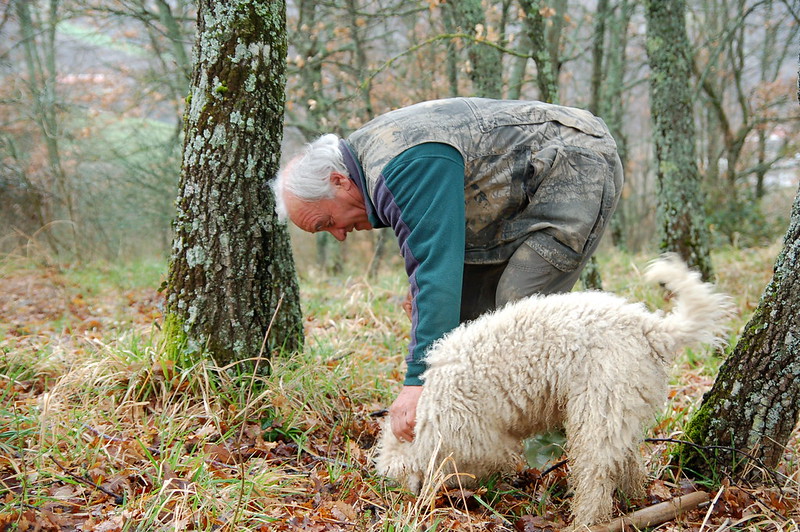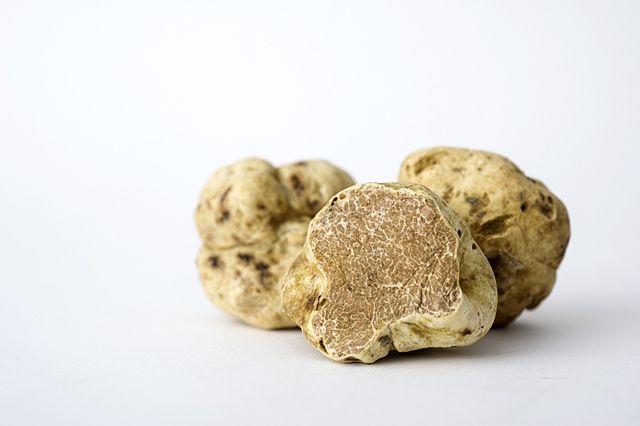 Did you know that white truffles can sell for nearly $2,200 per pound in Italy? And these prices are still on the rise!
Did you know that white truffles can sell for nearly $2,200 per pound in Italy? And these prices are still on the rise!
Truffles are fungi, which grow underground near the roots of oak, beech, and poplar trees.
In recent years, the famous – and expensive – art of truffle hunting has changed due to climate change. As harvests decrease, it has led to a dramatic increase in price, putting an industry at risk.
Let’s find out what’s happening!
Truffles & Truffle Hunting
 Truffles are found in very specific locations throughout Europe as they require a perfectly balanced environment to ripen. As a result, the truffles are rare and highly sought after. Their unique garlicky and aromatic flavor is favored by many top-tier chefs who use truffles, especially in pasta dishes.
Truffles are found in very specific locations throughout Europe as they require a perfectly balanced environment to ripen. As a result, the truffles are rare and highly sought after. Their unique garlicky and aromatic flavor is favored by many top-tier chefs who use truffles, especially in pasta dishes.
Truffle hunting is recognized as an Italian tradition and its practices have been passed down countless generations. Hunters identify truffle-hunting territories and, often with the help of trained dogs, collect the ripened mushrooms and deliver them to a global market.
Although the industry is mostly known for its dramatic prices, many cherish the time in nature, around their dogs, or communicating and learning from other hunters.
Impact of Climate Change
Although truffle hunting has been around for hundreds of years, climate change is taking a toll on this tradition.
Truffles need sufficient moisture and cool air to grow and are dependent on the previous summer's rainfall. In a recent study, scientists found that a temperature increase of 1 degree Celsius can reduce the yield of Périgord truffle by 22%. Thus as temperatures keep increasing, this would impact the production of truffles.
 These changes may also pose a larger threat in Italy, where the wine-making and truffle-hunting industries are forced to compete. As temperatures rise, many winemakers have opted to move their vineyards to cooler, North-facing slopes, where the grapes can thrive amid hot summers.
These changes may also pose a larger threat in Italy, where the wine-making and truffle-hunting industries are forced to compete. As temperatures rise, many winemakers have opted to move their vineyards to cooler, North-facing slopes, where the grapes can thrive amid hot summers.
However, these hills are mostly untouched woodlands and meadows where truffles are often found. If grape production is moved to these regions and the landscape is changed accordingly, the truffle industry could face an even bigger threat.
Looking Forward: A Future in Truffle Farming?
Scientists have begun studying the environmental impacts of climate change on the populations of truffles, which they hope will prolong their future.
Some truffle enthusiasts have even turned to truffle farming to continue reaping the monetary benefits. While these cultivated truffles are the same in scent and taste, farming is challenging since it takes a minimum of six years from planting to harvest (and this time varies significantly). Additionally, only two-thirds of the harvests are generally considered edible.
However, if managed well with sufficient water for irrigation, truffle farming allows for a controlled environment that is less at risk from global warming and enables the survival of truffles!
Sources: NY Times, UNESCO, National Geographic, Euronews, Modern Farmer







